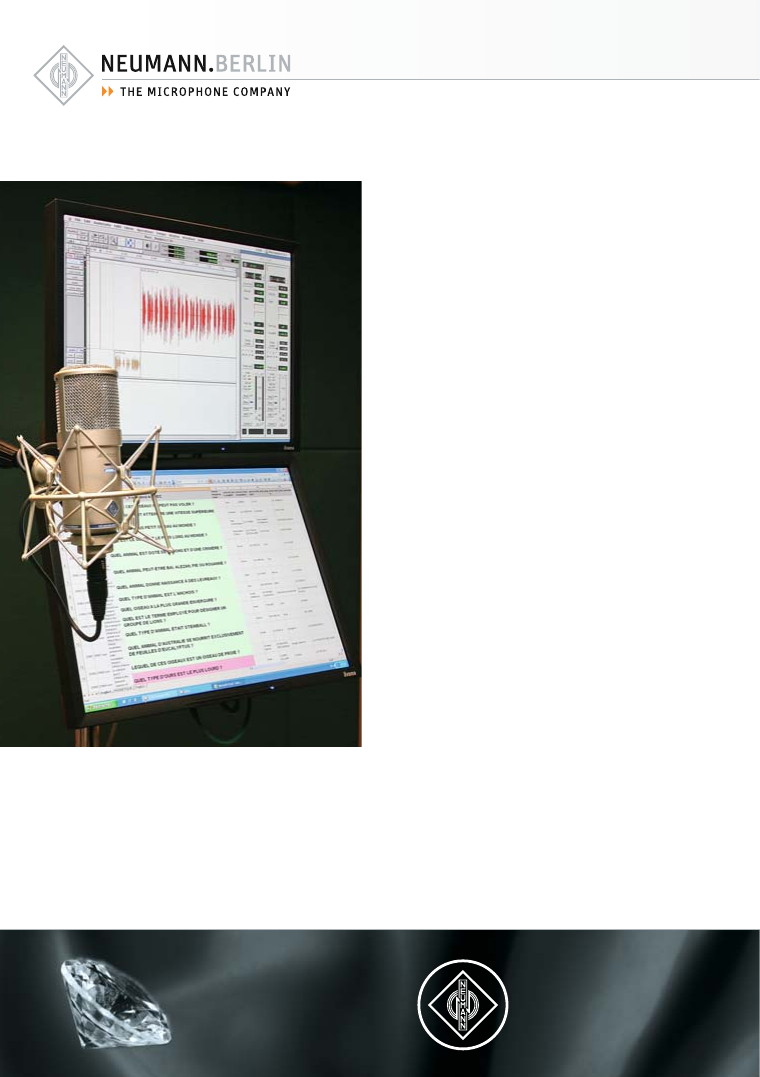
4
Why digital signal processing?
With the development of the first digital recording equip-
ment, the digitization of audio data began many years ago, at
the end of the signal processing chain. By now, almost all au-
dio signal processing components are available in digital
form.
TRUE NEUMANN SOUND:
The legendary Neumann
sound in the digital realm.
Pure Neumann capsule
sound.
It is well-known that digital signals provide the necessary
conditions for mathematically precise calculation and pro-
cessing, allowing signals to be modified, copied, transmitted
and stored as desired, with no loss of quality.
In contrast, analog signal processing is characterized by limit-
ed precision, error accumulation, a lack of redundant signal
information, and no possibility to include error correction pro-
cedures. In the analog signal transmission chain, every pro-
cessing step is thus associated with a deterioration of signal
quality. This results in a progressive decrease in dynamic
range, due to the introduction of noise voltages and nonlinear
distortion.
Moreover, digital processing permits the performance of func-
tions that are difficult or impossible to implement by means
of analog signal processing. This is particularly the case with
functions that require intermediate data storage.
A microphone technology milestone
With the Solution-D digital microphone system, Neumann has
succeeded in bringing the dynamic range and signal fidelity
of the best analog studio microphones into the digital do-
main, thus making possible an entirely digital signal chain for
audio production.
Thanks to optimized A/D conversion, especially developed
synchronization technology, and the capability of controlling
standard microphone parameters and various integrated sig-
nal processing functions remotely, the Solution-D meets the
most demanding requirements of professional audio produc-
tion. The fundamental principle of the technology permits re-
cordings to be made with no „bottlenecks“ in the signal chain.
An extremely fast peak limiter integrated into the micro-
phone provides constant protection from overloading. The
Neumann A/D converter, which is likewise located in the mi-
crophone, eliminates the necessity of tedious experimenta-
tion with external converters and preamps. The Neumann
sound, with optimal quality, is therefore captured directly on
the hard drive. Users can rely on this, and thus have more
time for the essentials.
Components and interfaces
The power supply, remote control, synchronization, and signal
and data transmission of the digital microphones conform to
the AES 42 standard. Neumann made a decisive contribution
to the development of this standard, which supplies the nec-


















